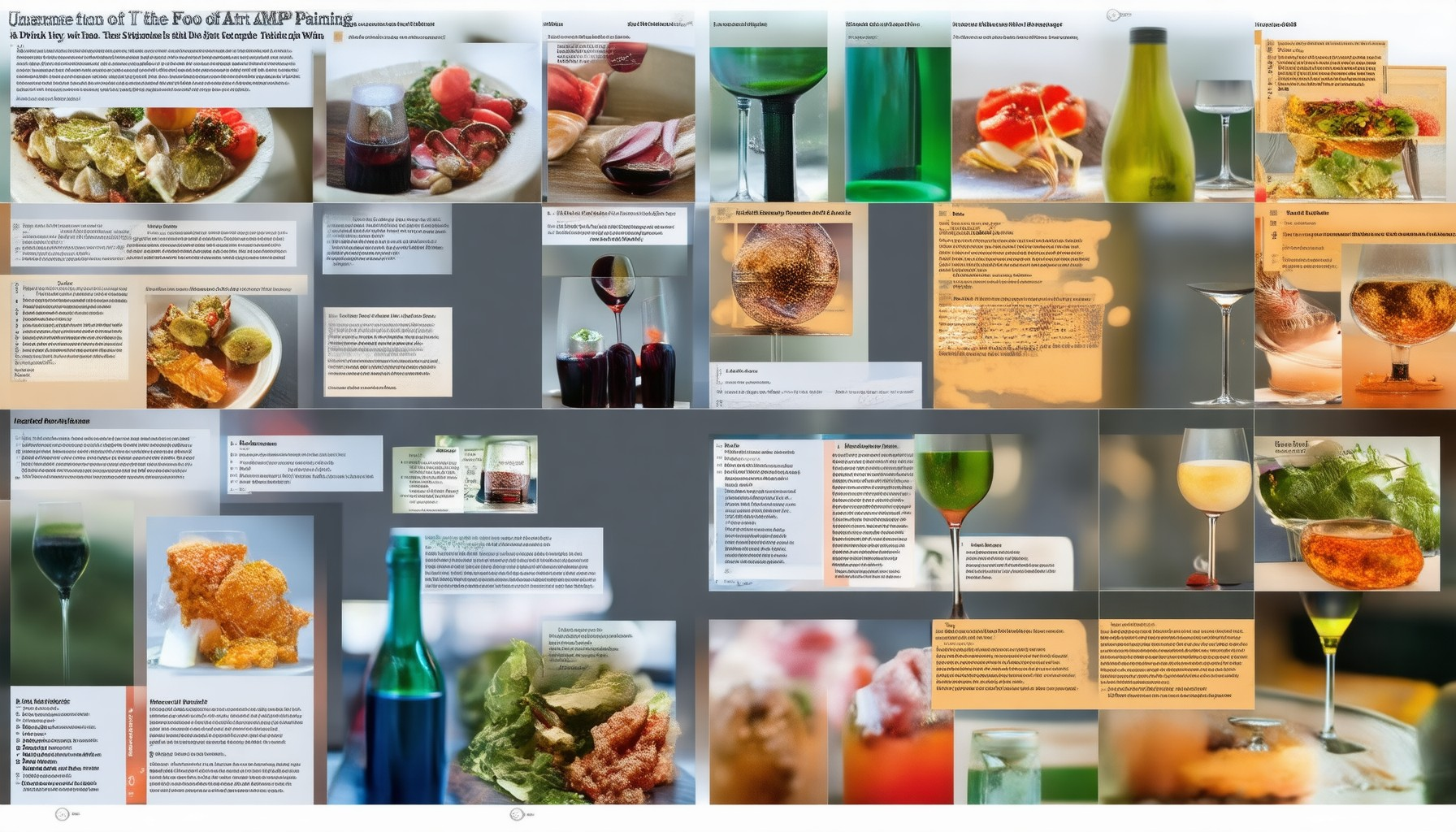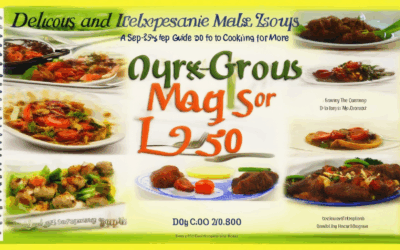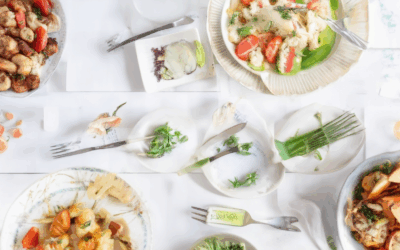Discover the art of food, drink, and wine pairing with our comprehensive guide designed to transform your culinary experiences. Whether you’re an amateur chef or a seasoned host, mastering the perfect beverage pairing can elevate your meals to new heights. In this guide, we’ll delve into the secrets of successful beverage pairing, offering practical tips, examples, and insights to help you create unforgettable moments at the table. From understanding complementary drinks to exploring the nuances of wine pairing etiquette, this article is your ultimate resource for unlocking the full potential of food and beverage combinations. Let’s embark on a journey to discover how to pair drinks with your favorite dishes, avoid common pitfalls, and master the art of Rule #1 in food and wine pairing. Get ready to reimagine your dining experience!

What Are Food and Beverage Pairing Techniques?
The art of pairing food and drink involves understanding how different flavors, textures, and intensities interact to create a harmonious dining experience. Below are key principles and techniques to help you master food and beverage pairing.
Key Principles of Food and Beverage Pairing
- Complementary Flavors: Certain ingredients complement each other perfectly. For instance, dark chocolate pairs well with red wines like Cabernet Sauvignon due to their tannins and cocoa notes.
- Balancing Act: Some pairings balance each other. A crisp white wine like Chardonnay complements a rich, creamy dessert such as tiramisu.
- Weight and Intensity: Consider the weight and intensity of both the food and drink. A light appetizer like ceviche pairs beautifully with a refreshing mojito, while a hearty steak benefits from a bold, full-bodied red wine.
Tips for Successful Pairing
- Consider the Occasion: Formal gatherings may call for sophisticated pairings like champagne and caviar, while casual settings might pair burgers with a frothy milkshake.
- Experiment and Explore: Don’t shy away from trying unexpected combinations. Coffee-infused desserts like tiramisu pair wonderfully with espressos or Italian espressos.
- Pick Based on Personal Preference: Remember, there’s no one-size-fits-all rule. What you enjoy most is what matters most.
How to Complement Drinks
Complementing drinks involves pairing them with foods or other beverages in a harmonious way that enhances the overall dining experience. Here are some effective strategies:
- Coffee Complements:
- Milk or cream for a creamy texture.
- Sugar or honey for a sweet twist.
- Vanilla or cinnamon for added flavor.
- Pairs well with desserts like tiramisu or cappuccino with cannoli.
- Tea Complements:
- Lemon or honey for a refreshing taste.
- Herbal teas with spicy or floral notes.
- Green tea with citrus fruits or vegetables.
- Wine Complements:
- Red wine with red meats, game, and aged cheeses.
- White wine with seafood, poultry, and light cheeses.
- Sparkling wine for celebratory occasions and foie gras.
- Beverages Complement:
- Soda or club soda with rich, fatty meats like bacon.
- Fruit juices with breakfast dishes or light appetizers.
- Non-alcoholic beverages for those avoiding alcohol.
- Non-Alcoholic Options:
- Sparkling water with herbs or lemon for light meals.
- Herbal teas that complement nearly any course.
By thoughtfully pairing drinks with their complementary foods, you can elevate your dining experience and impress your guests. Explore our culinary-pairing-guide for more expert tips and our wine-pairing-101 guide to perfect your drink pairings.

What Are the Three Types of Pairings?
- Complement: This type of pairing focuses on balancing flavors. For instance, a sweet wine pairs well with a dessert, while a bold coffee complements a rich chocolate.
- Contrast: Here, opposite flavors are brought together to create a unique taste experience. A spicy dish might pair with a cool, refreshing drink like mint tea.
- Cut: This method involves cutting or slicing food in a way that enhances texture and balance. For example, slicing avocado onto toast creates a satisfying contrast between soft and crunchy textures.
These pairings can be explored further at Memories Restaurant , where culinary enthusiasts share recipes and dining insights.

Wine Pairing Etiquette: A Comprehensive Guide
When it comes to wine pairing, the goal is to create a harmonious balance between the flavors of the food and the wine. Here are some essential tips to help you navigate wine pairing like a pro:
- Match Flavor Profiles: Start by assessing the primary flavors of your dish. If the dish is rich and hearty, opt for a bold red wine with high tannins and robust fruit tones. For lighter dishes, a crisp white wine or a delicate sparkling wine works perfectly.
- Consider Acidity: Pair acidic foods like tomatoes or citrus with wines that have high acidity, such as Chardonnay or Sauvignon Blanc. Sweet desserts pair well with dessert wines like Sauternes or Port, which have natural sweetness and low acidity.
- Think About Regionality: Wines often reflect the terroir of their region. For example, earthy Italian dishes pair beautifully with wines from Burgundy or Piedmont, while spicy Asian cuisine complements bold New World Syrah or Zinfandel.
- Serving Temperature Matters: Serve red wines slightly cooler than room temperature (60-65°F) and white wines slightly warmer (50-55°F). Sparkling wines should be served colder, around 38-40°F.
- Don’t Overdo It: Sometimes less is more. If a dish has a dominant flavor, choose a wine that complements it without overwhelming it. For instance, a buttery dish might pair better with a subtle, oaky Chardonnay than a powerful Cabernet Sauvignon.
- Experiment and Enjoy: Wine pairing is a personal experience. Feel free to mix and match to see what combinations work best for you. There’s no rulebook—just your palate to guide you!
By paying attention to these guidelines, you can elevate your dining experience and find the perfect wine to complement any meal. Remember, the most important thing is to relax and enjoy the process!
Common Mistakes Beginners Make When Pairing Wine
Pairing wine with food can seem intimidating for newcomers, but with a little knowledge and practice, it becomes second nature. Below are some of the most frequent errors that beginners make, along with tips to avoid them:
- Mismatching Intensity : One of the most common mistakes is pairing a light, delicate wine with a hearty, flavorful dish. For instance, a crisp Sauvignon Blanc is perfect with seafood, but it may overpower subtle dishes like chicken breast. Opt for a medium-bodied wine like Chardonnay or Pinot Noir for balanced meals.
- Neglecting Acidity : Acidic wines like Champagne, Sparkling Wines, and Italian Prosecco are excellent for cutting through richness in dishes like foie gras or buttery pastas. Without enough acid, these wines can feel flat and uninteresting.
- Overlooking Sweetness : Desserts often require a sweeter wine to complement their flavors. Dry Rieslings, Moscato, and Sauternes are great options for pairing with cakes, pies, and fruit-based desserts.
- Not Understanding Tasting Techniques : Many beginners don’t realize the importance of swirling and sniffing wine before drinking. Swirling aerates the wine, releasing aromatic compounds, while sniffing helps identify its bouquet and potential food pairings.
- Underestimating Cheese Pairings : Cheese can be tricky, but it’s worth learning. Soft, mild cheeses like Brie or Camembert pair well with Chardonnay or Sauvignon Blanc, while hard cheeses like Parmesan or Pecorino work best with red wines like Cabernet Sauvignon or Merlot.
- Overusing Tannins : Wines high in tannins, such as young Cabernets or Syrahs, can be overwhelming for dishes with delicate ingredients. Pair them with hearty meats like steak or lamb, where their structure can complement the dish rather than overwhelm it.
- Ignoring Food Safety : Once a bottle is opened, it should be consumed within a few days. Store remaining wine in a cool, dark place to prevent oxidation and spoilage, which can quickly ruin a perfectly good bottle.
- Not Considering Cooking Methods : The way food is prepared significantly impacts wine pairing. Grilled meats pair well with bold reds, while baked or braised dishes benefit from richer, more complex wines like Burgundy or Barolo.
To improve your wine-pairing skills, explore our comprehensive wine pairing guide and discover tailored recommendations for your favorite dishes. Don’t forget to experiment and enjoy the process!

What is the rule #1 when matching food with wine?
The primary principle of food and wine pairing is to match like with like . This means pairing foods and wines of similar weight, texture, and flavor profiles. Here’s why this works:
- Body Fat and Acidity Balance : Fatty or rich foods pair well with wines that have high acidity to cut through the fat, enhancing flavors. Conversely, lean dishes benefit from softer, lower-tannin wines.
- Textural Similarity : Wines and foods with similar textures feel better together. A creamy dessert pairs nicely with a smooth, buttery Chardonnay, while a crisp salad matches well with a light, acidic wine like Sauvignon Blanc.
Examples of Pairings:
- Rich Red Wines with Hearty Meats : Pair bold, tannic reds like Cabernet Sauvignon with steak, lamb, or pork chops.
- Light Whites with Delicate Dishes : Light, aromatic whites like Pinot Grigio or Riesling complement seafood, chicken, or salads.
- Sweet Desserts with Sweet Wines : Sauternes or Icewine pairs beautifully with caramelized desserts or fruit-based dishes.
Conclusion
Remember, the foundation of successful wine pairing is understanding and matching the weight, texture, and flavor intensity of your food with the corresponding wine characteristics. This approach ensures a harmonious balance and enhances your dining experience.





0 Comments